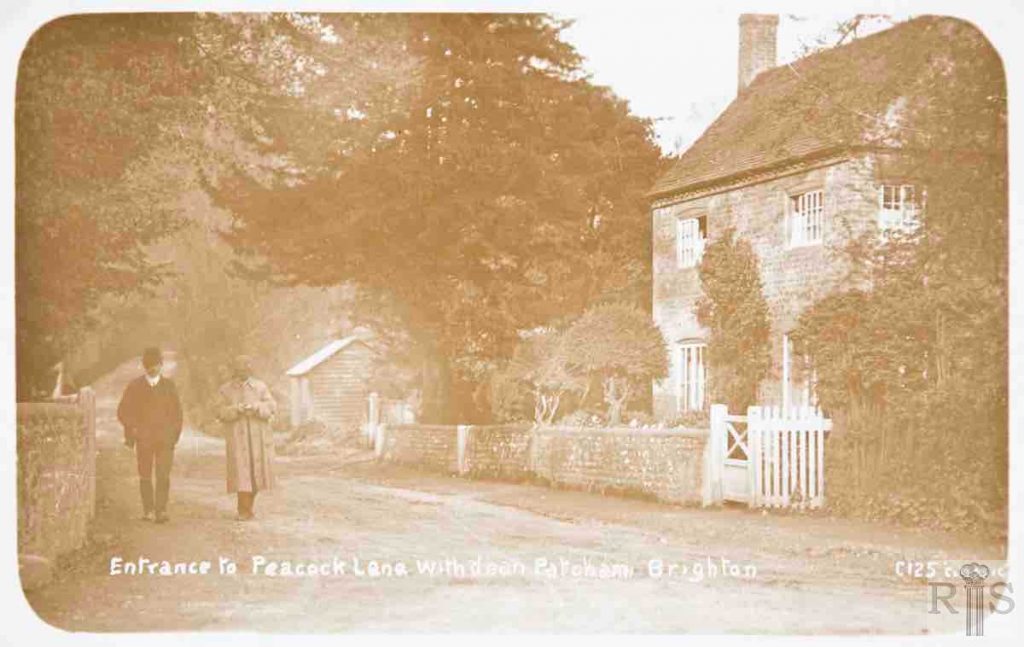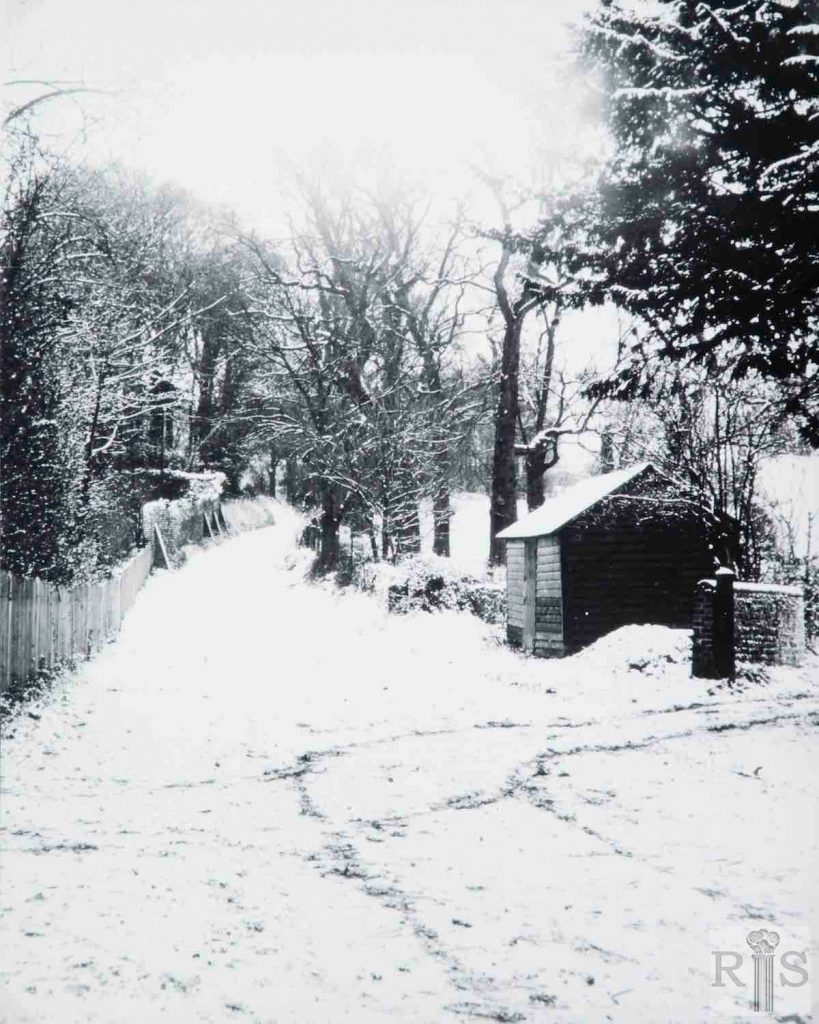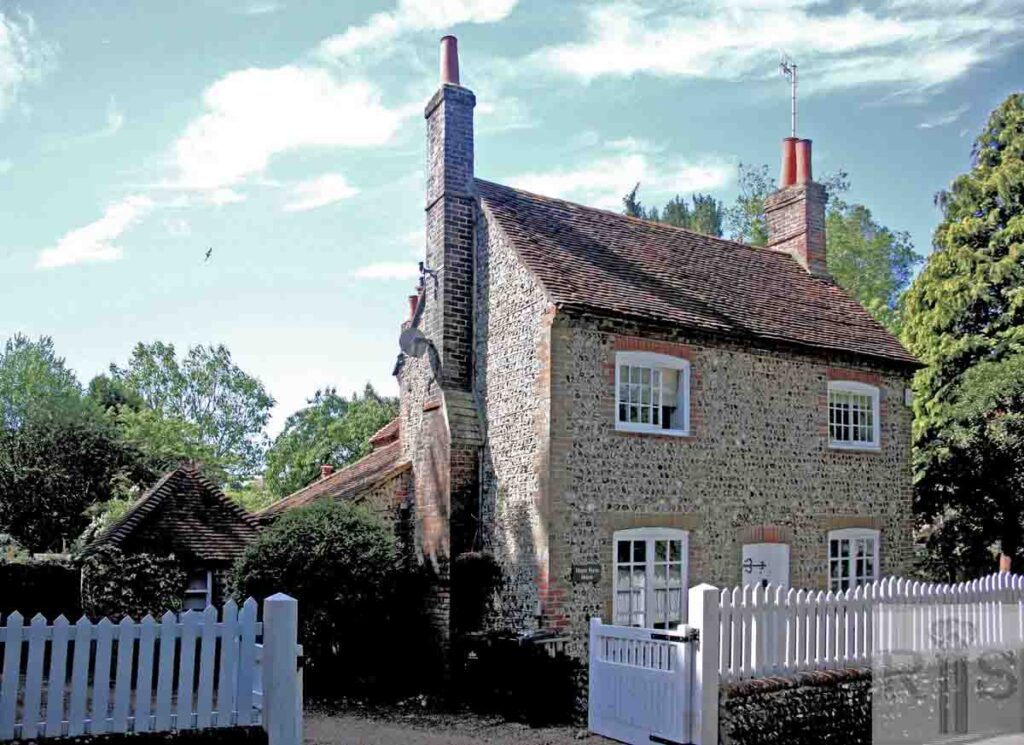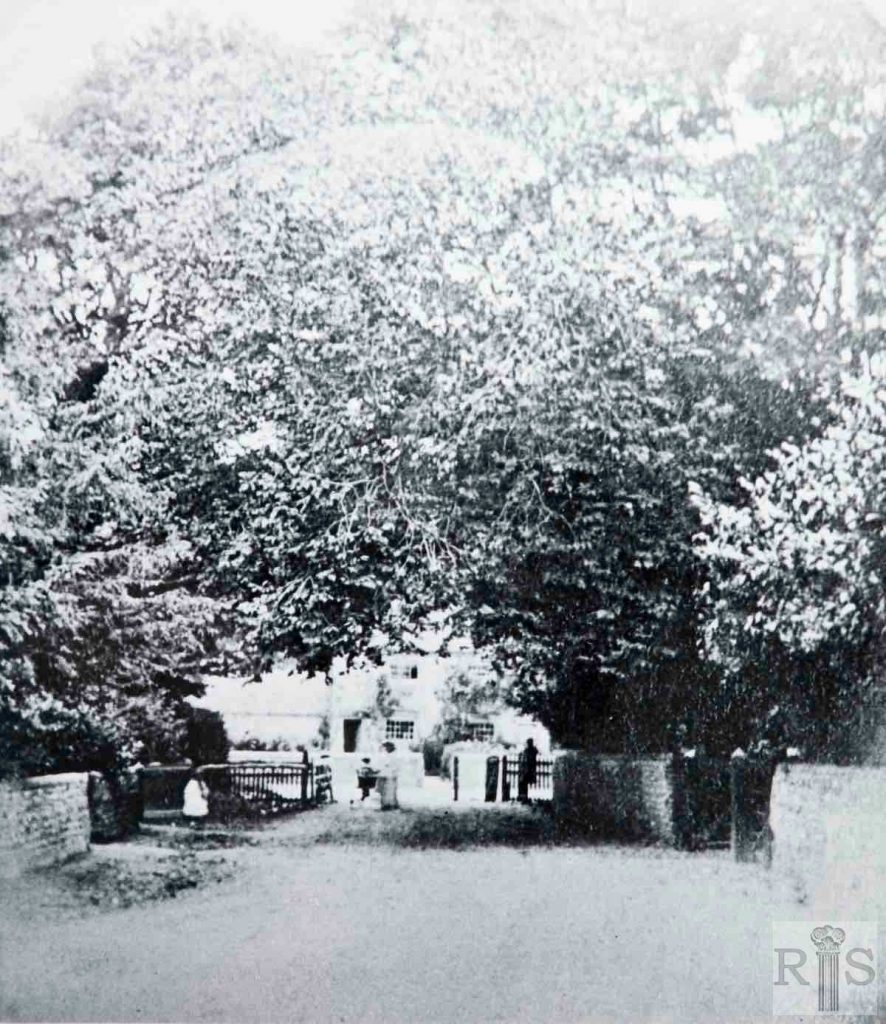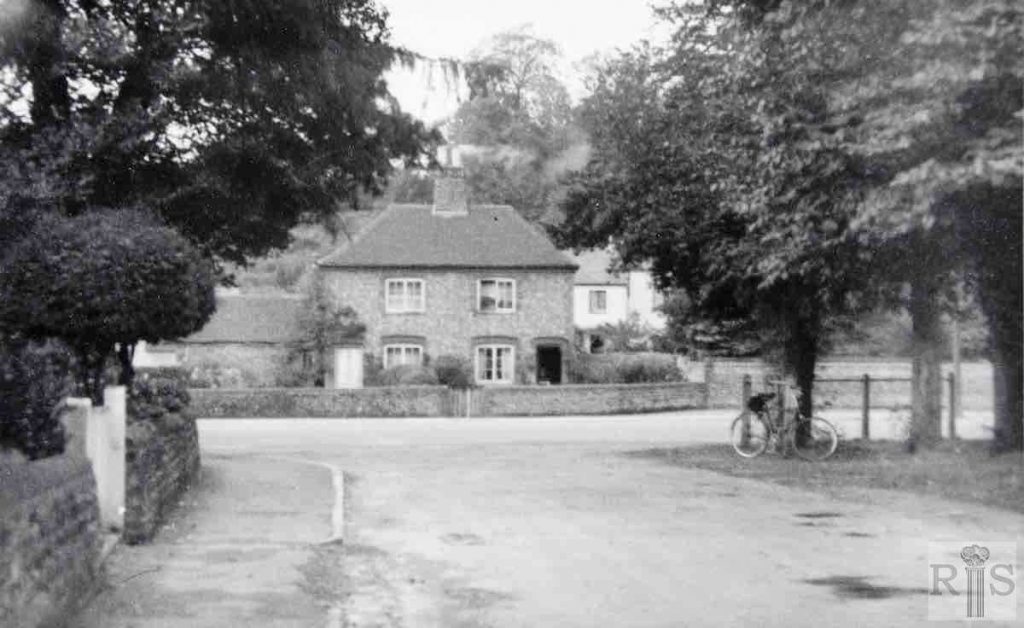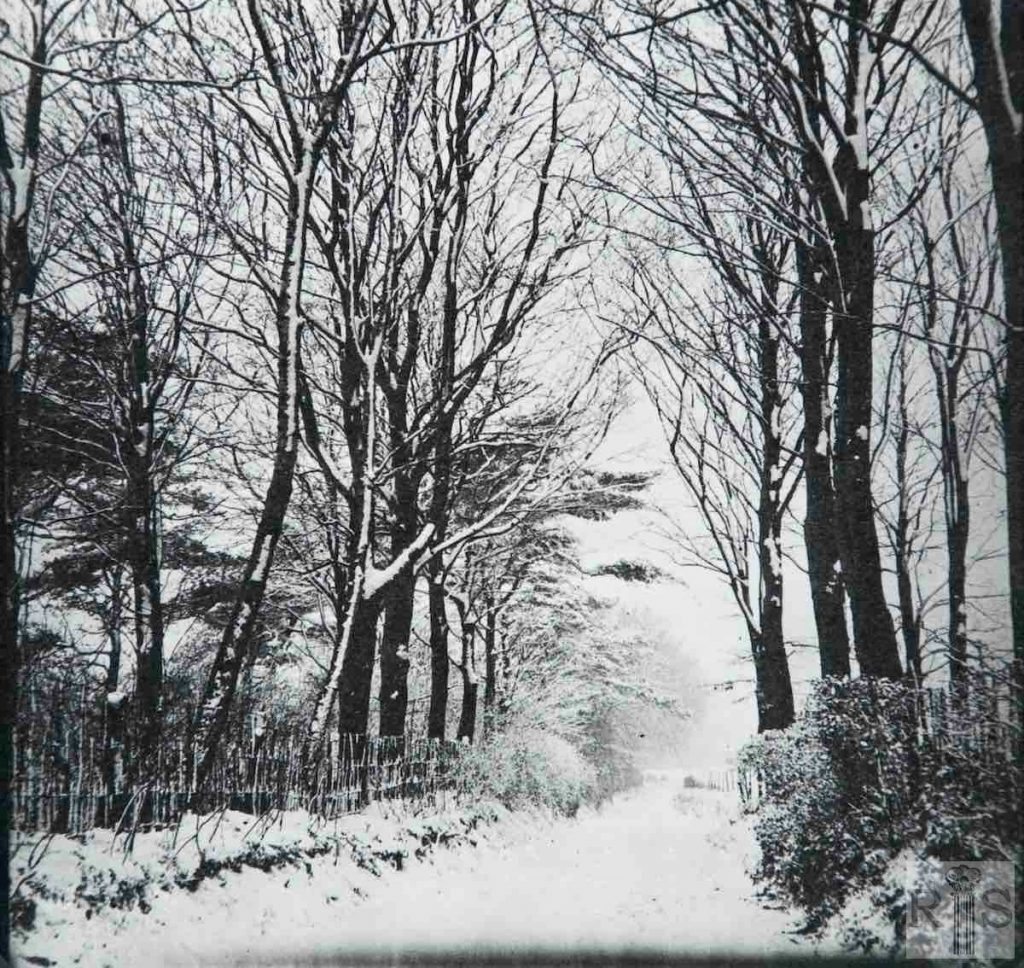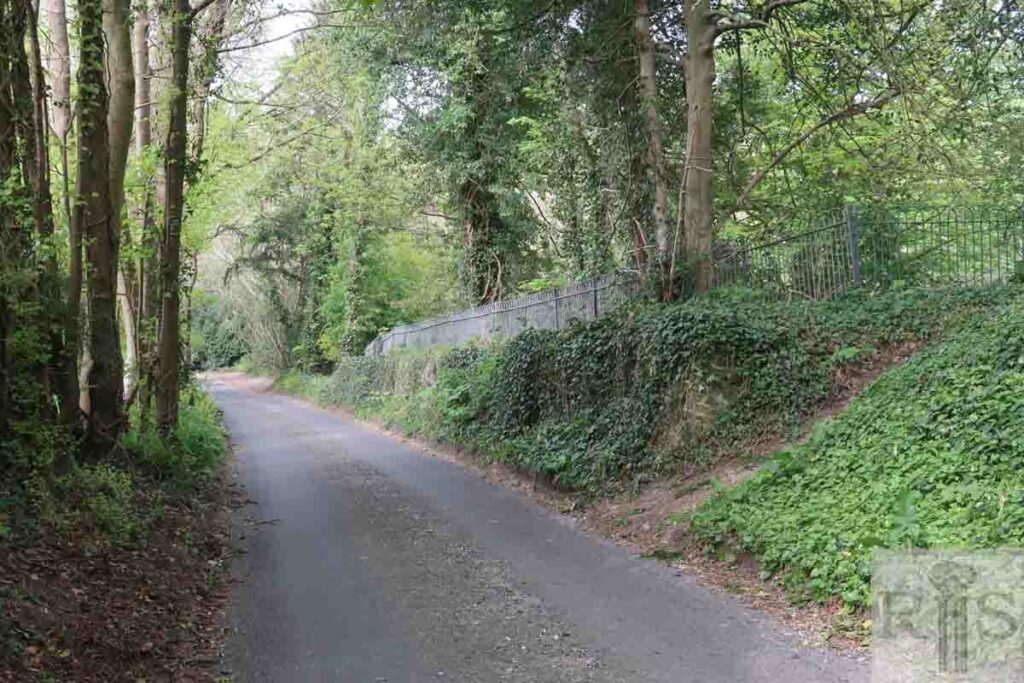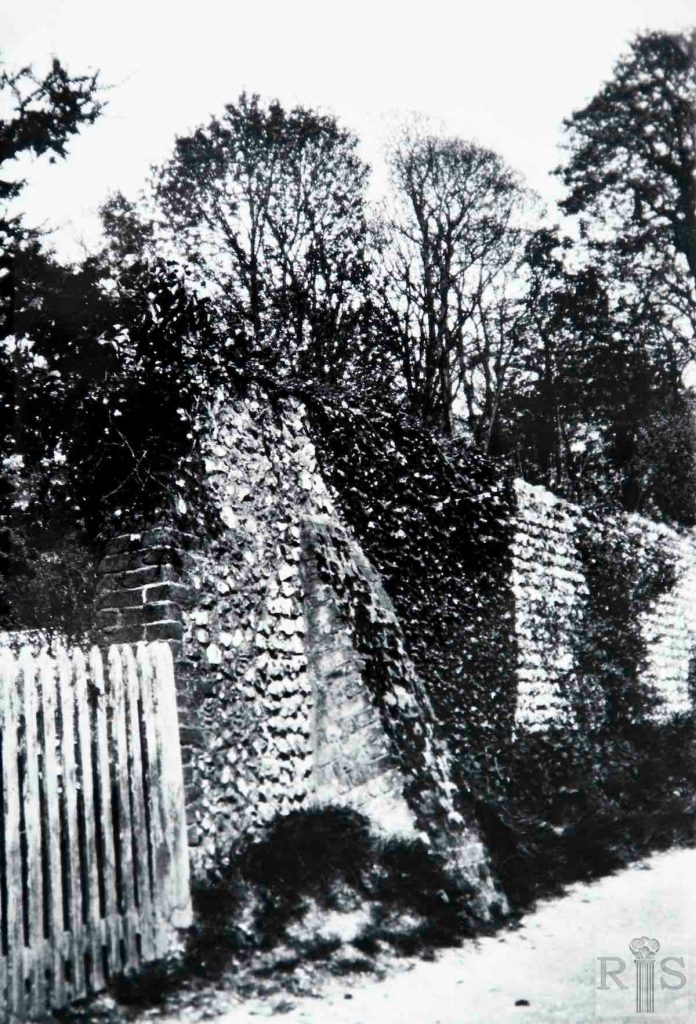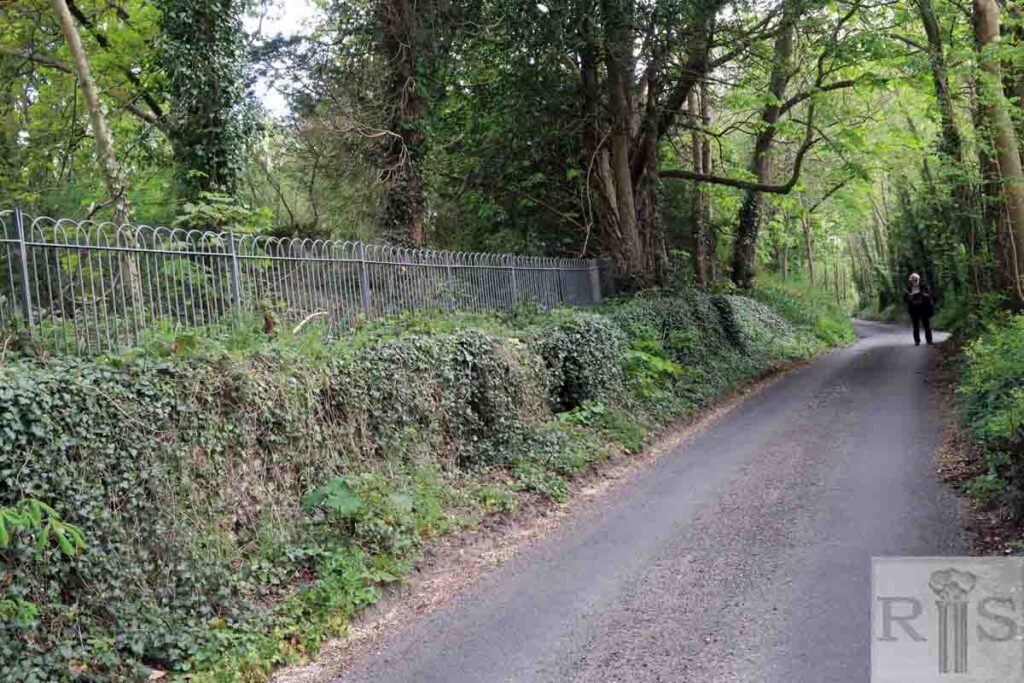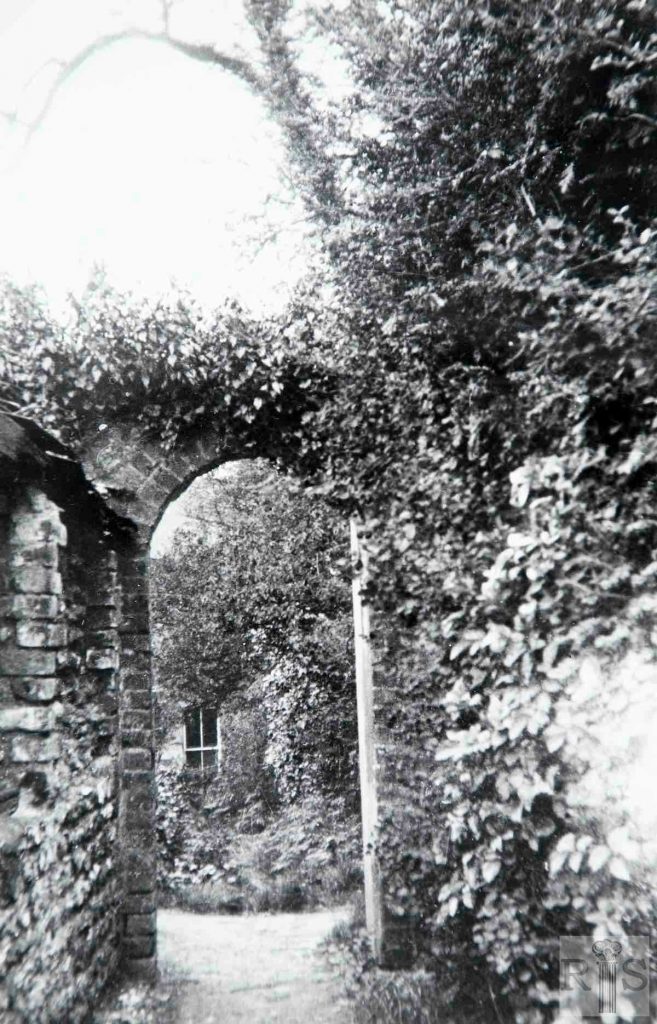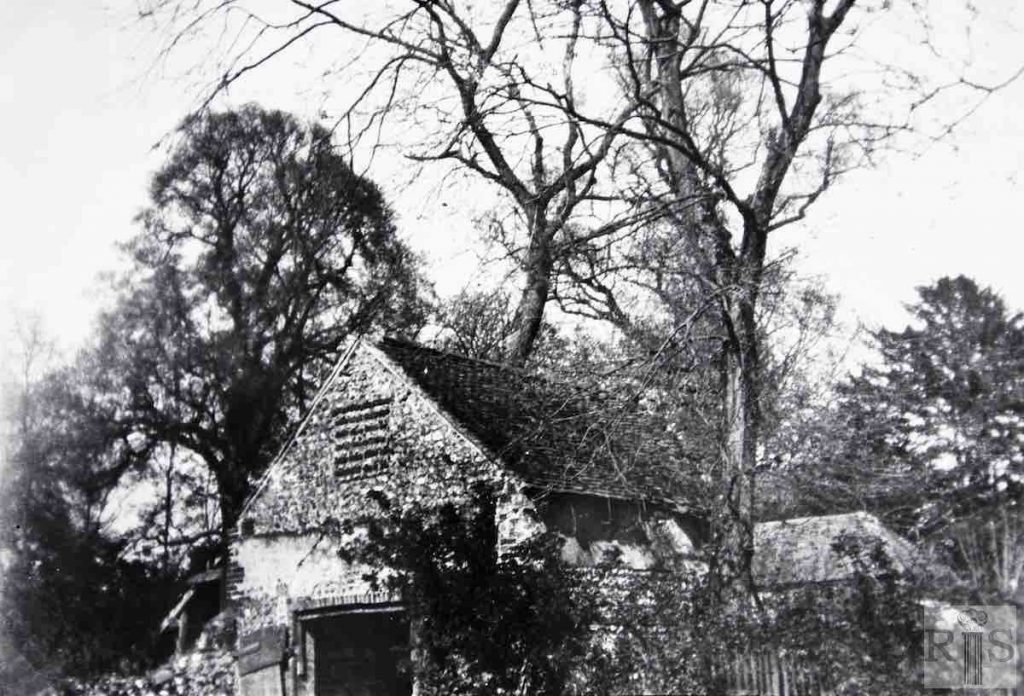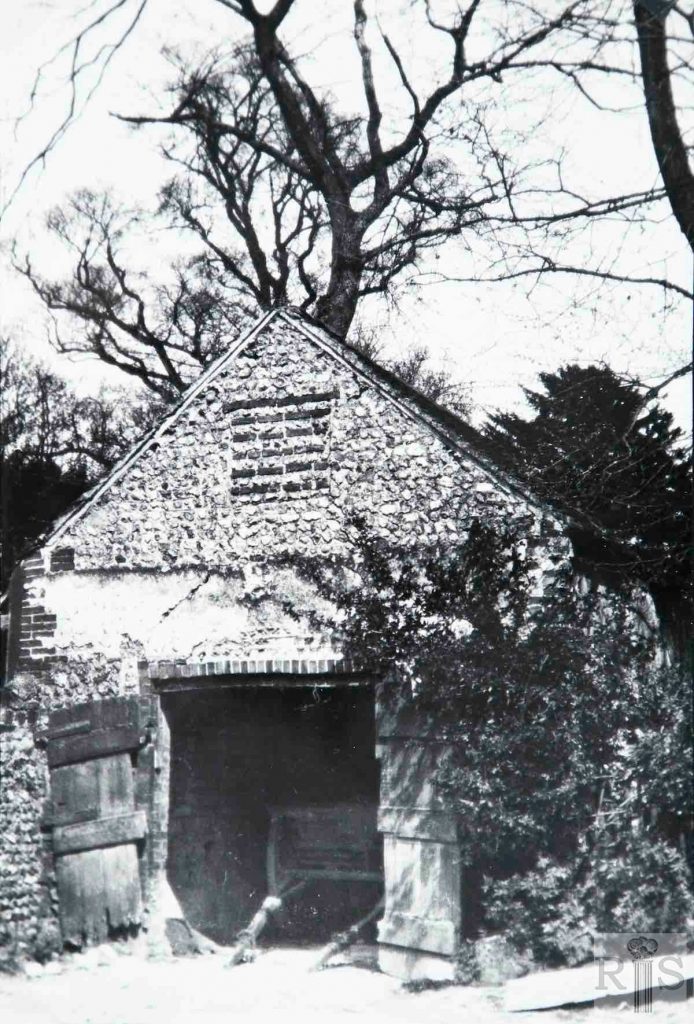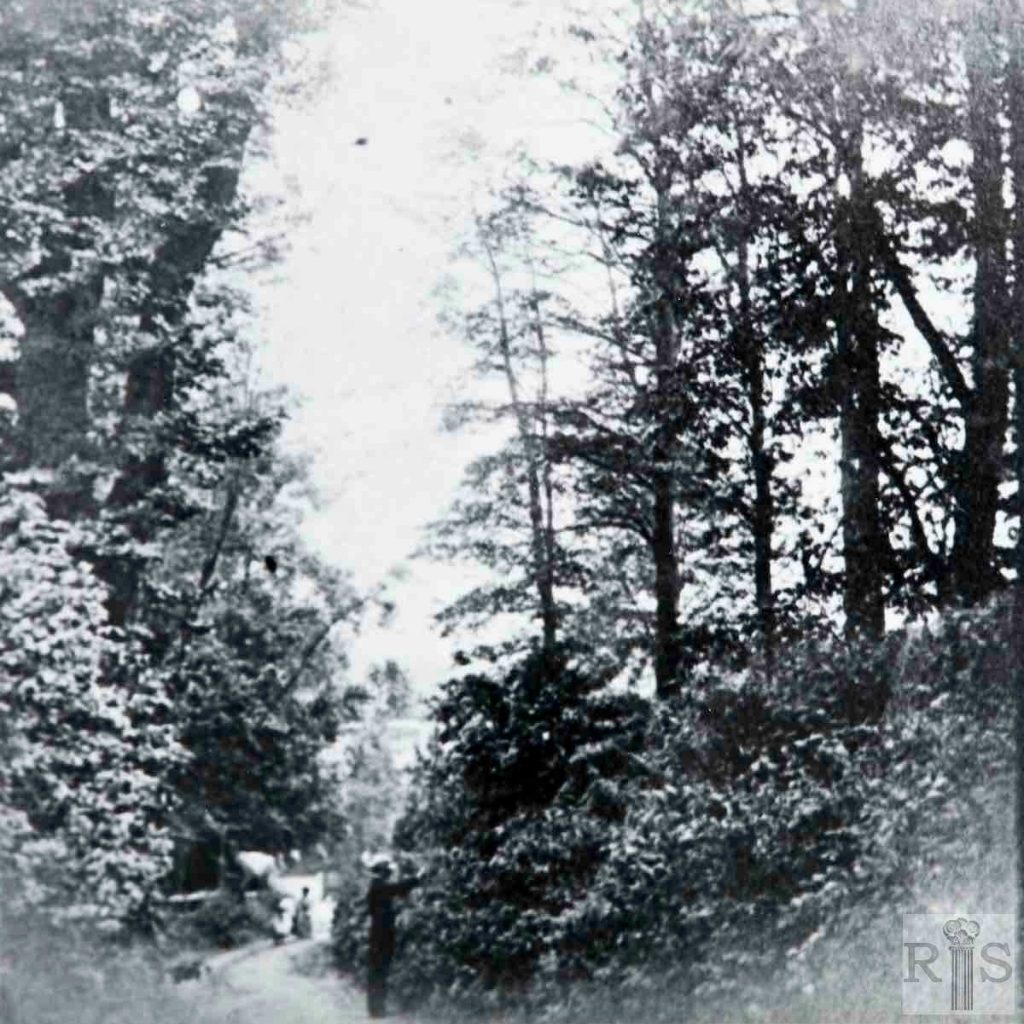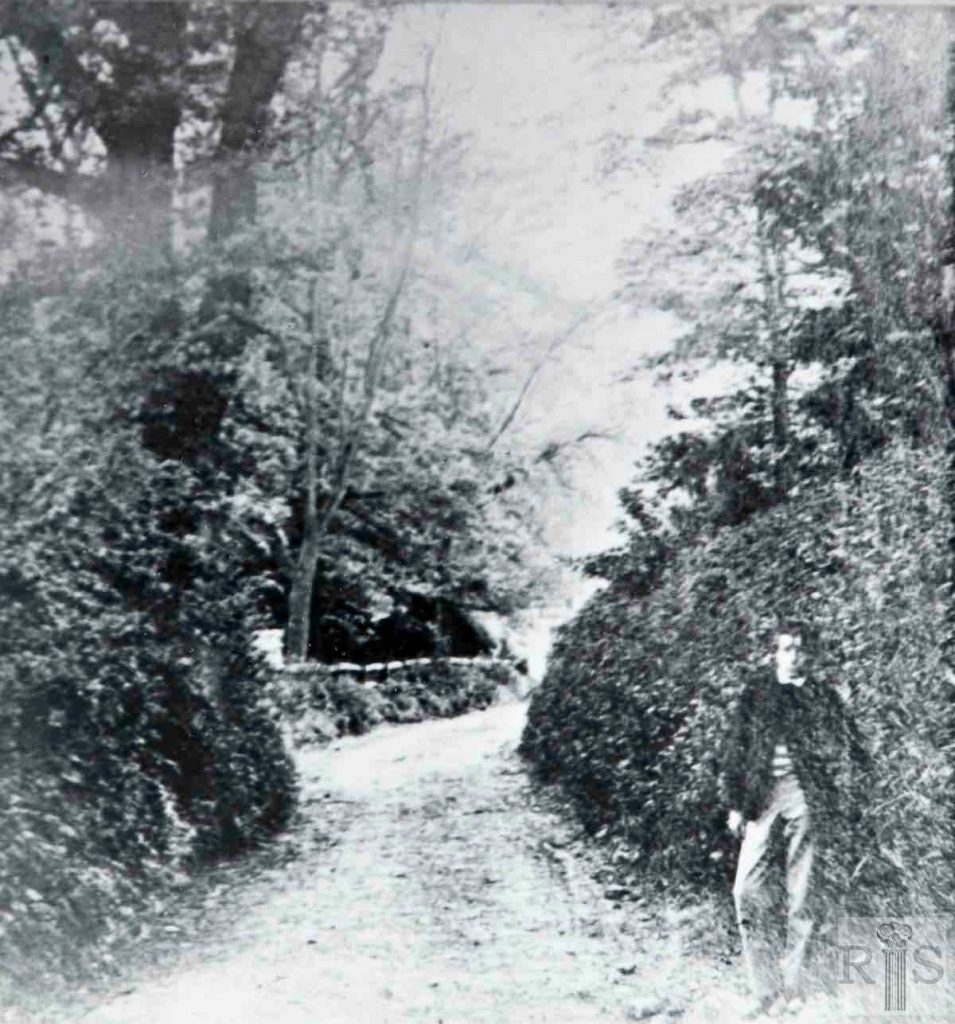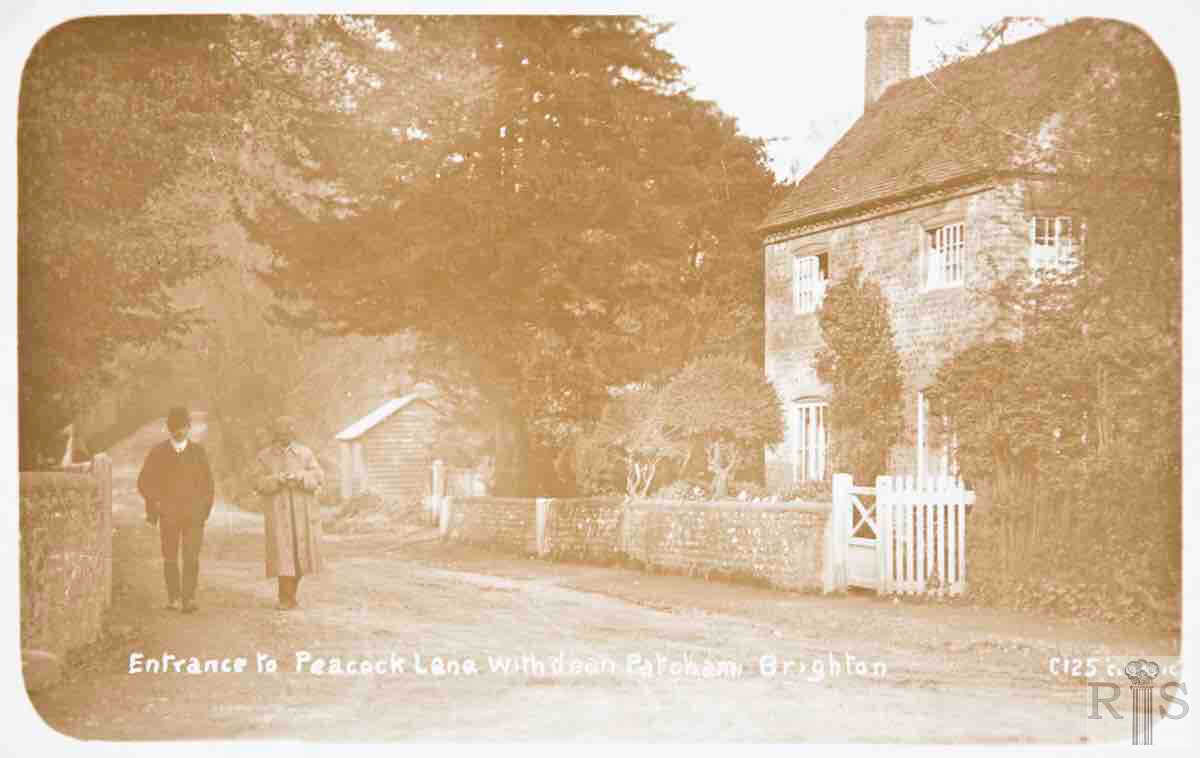
James Gray: Bottom of Peacock Lane, showing Home Farm House about 1911. jgc_34_158
James Gray: A wintry scene, looking up Withdean Drove, now called Peacock Lane. Taken many years ago, there is no information as to the exact date and there are no clues to help us. jgc_34_139
2020: The main 2020 photo of the early-nineteenth-century Home Farm House shows changes since 1911 to the front garden wall, and the position of the front gate, which is now further up Peacock Lane, away from the junction with London Road. The property is still easily recognisable, but the small building further up the lane has gone. It is now part of an allotments site, owned by Brighton & Hove City Council.
The second 2020 photo was taken a few yards east of the original one, and shows the current entrance gates to Home Farm House and the smart white fencing on top of the rebuilt flint wall. (Photographer: Alan Hobden)
James Gray: Western Withdean Cottages, which lay back from the road, are hidden from view by the barn but are clearly seen in the previous picture, which looks down the foot of Peacock Lane to the London Road. On the right is the entrance to Withdean Manor House facing the entrance to Home Farm House, which still stands. I do not know when the wooden railings and the gate leading to London Road were removed. The windows of the two cottages seem much smaller than they were in recent times. They too were removed in 1961. jgc_34_117
2020: This picture is also looking down the foot of Peacock Lane to London Road. The buildings of Withdean Home Farm on the far side of London Road have been replaced by The Park Apartments. Withdean Manor House was demolished in 1936. Home Farm House still stands. (Photographer: Helen Glass)
James Gray: View of the top of Peacock Lane, looking east towards the present Surrenden Road. Additional Information: Snow. jgc_34_138
2020: The belt of trees on the north, left-hand side is still there but houses have been built between it and Surrenden Road. Houses have also been built behind the trees on the south side. (Photographer: Helen Glass)
James Gray: Looking down Peacock Lane on 4 August 1932, showing the massive retaining walls of the old Manor House which was demolished in 1936. Photograph is out of sequence, but I must make use of all available space. jgc_34_171
2020: The wall is much reduced in height but the flintwork and brick buttresses can still be distinguished under the ivy. (Photographer: Helen Glass)
James Gray: Behind this huge flint wall, at the foot of Peacock Lane, for many years stood Withdean Manor House. In 1885, another house was built here for the bailiff of Lady Ogle, in later years a Mr. Tozer. This house was removed in 1936 and the cleared site was taken over by Brighton Corporation as an open space. Parts of this old wall still remain, however. jgc_34_141 and jgc_34_142
2020: The wall is much reduced in height but the flintwork and brick buttresses can still be distinguished under the ivy. The open space behind is Withdean Park. (Photographer: Helen Glass)
James Gray: Photographs of the Coach House, the Dovecot and the massive retaining wall of old Withdean Manor. jgc_34_143, jgc 34_144 and jgc_34_145
James Gray: I can add no better description of this lane than that written by the photographer on the back of his original photograph taken somewhere around 1860. I cannot identify this lane with any certainty. The only clue is that the photographer, William Cornish, took several photographs in the Withdean, Tongdean Lane, and Peacock Lane area and a century ago there were few other well-defined lanes in this district. My guess is it was at the foot of the old Tongdean Lane that emerged into London Road several yards north of the present road. As an alternative it could have been some distance up Peacock Lane looking down to London Road. Both photographs are, of course, copies of the originals. jgc_34_118
James Gray: See caption for jgc_34_118 above. jgc_34_119
2020: This photograph was taken in Peacock Lane looking down towards London Road, one of the possible sites identified by James Gray of the 1860s images. It is remarkable that such a rural landscape should still exist in the midst of an otherwise built up area on the northern edge of the city. (Photographer: Helen Glass)
